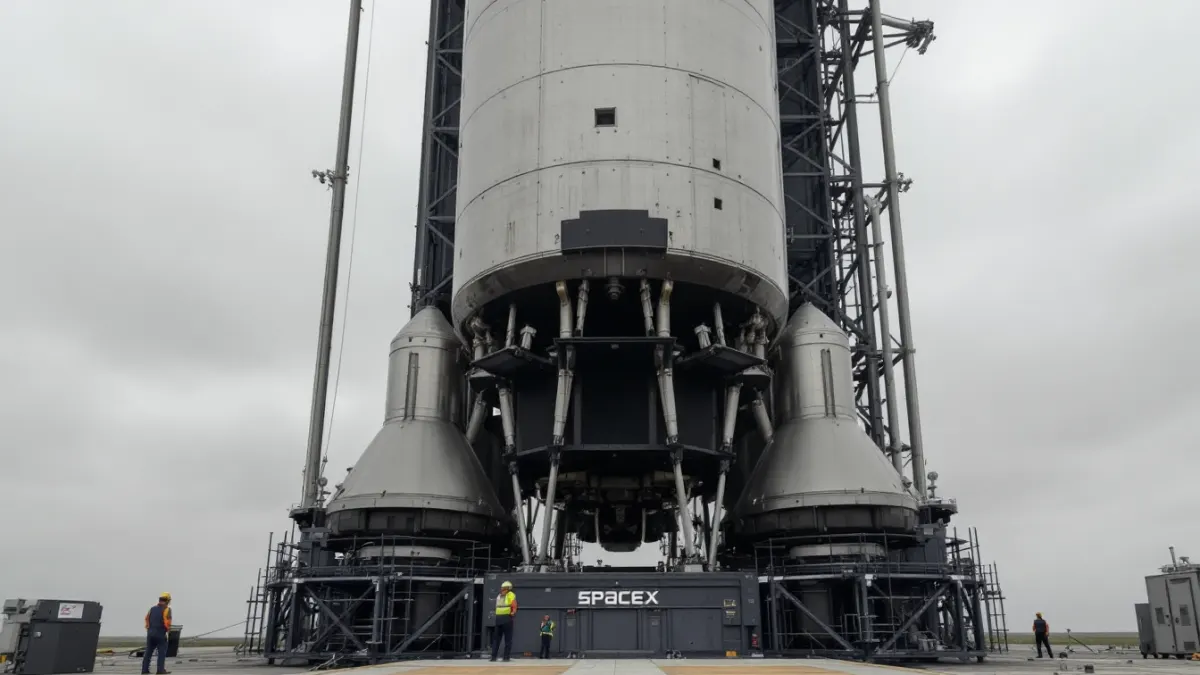Why SpaceX’s Starship Explosion Reveals Next-Level Leverage Challenges

SpaceX's latest upgraded Starship experienced a failure during testing, delaying its next-generation launch timeline. The explosion was less dramatic than past incidents but signals critical engineering hurdles remain. This setback isn’t just a technical glitch—it reveals the complex leverage dynamics in scaling reusable space systems. SpaceX’s challenge shows how leverage in aerospace depends on mastering system constraints, not just raw innovation.
Why SpaceX’s Setback Defies Simple Failure Narratives
Conventional wisdom frames test explosions as costly mistakes or rushed engineering. That view misses the real story: it’s about the interaction of tightly coupled systems reaching new physical and operational constraints. Unlike rocket firms still relying on expendable designs—such as SpaceX pioneered reusability but now faces the complexity tradeoff inherent in scaling that model. This complexity is a constraint repositioning, not just a technical fault.
This dynamic resembles challenges described in Unlocking Business Leverage Through Process Improvement, where evolving system complexity shifts focus from input scaling to refining internal bottlenecks.
Scaling Starship: The Leverage of Systems Integration
Starship’s reusable architecture promises compounding leverage by lowering launch costs and turnaround time. Yet achieving this requires flawless orchestration of modular engines, fuel systems, and automated safety protocols. Competitors like Blue Origin and traditional players such as United Launch Alliance lean on less integrated architectures, trading off some reusability for reduced system interdependencies.
Automation and systems thinking underpin SpaceX’s approach, but the explosion signals friction where these complex systems still require refinement. Operational leverage only emerges after stabilizing these failure points.
The Constraint Shift: From One-Off Builds to Continuous Infrastructure
This test failure highlights a fundamental constraint shift from single-launch missions to building a scalable, rapid-launch infrastructure. Unlike conventional rockets designed for one-time flight, Starship aims for hundreds of flights with quick turnarounds. This demands system designs that self-correct without constant human intervention.
This mirrors when organizations transition from customized workflows to automated platforms, described in How To Reduce Operational Costs And Boost Profits Through Business Leverage. The key constraint now is creating feedback loops and automation that handle edge failures autonomously.
Who Gains from Mastering Starship’s Leverage Dynamics?
Aerospace operators who understand that leverage depends on stabilizing interdependent systems will lead next-generation space infrastructure. SpaceX’s failure is a signal: those who master continuous process improvement and system resilience turn setbacks into durable advantages. Other spacefaring nations and companies will watch closely to see how SpaceX repositions constraints rather than just retrying past fixes.
“Scalable aerospace leverage depends on designing systems that work without constant human fixes.”
Related Tools & Resources
The complexities and systemic constraints faced by SpaceX’s Starship highlight the critical importance of clear, actionable processes in managing interdependent operations. If you're looking to master continuous process improvement and stabilize complex workflows, platforms like Copla offer powerful solutions for documenting and standardizing operating procedures, turning intricate systems into scalable strengths. Learn more about Copla →
Full Transparency: Some links in this article are affiliate partnerships. If you find value in the tools we recommend and decide to try them, we may earn a commission at no extra cost to you. We only recommend tools that align with the strategic thinking we share here. Think of it as supporting independent business analysis while discovering leverage in your own operations.
Frequently Asked Questions
Why did SpaceX's Starship explosion happen despite previous test successes?
The explosion during Starship's test highlights the complex engineering challenges involved in scaling reusable space systems. It signals that managing system interdependencies and evolving operational constraints, rather than just technical errors, remain critical hurdles.
What makes SpaceX's reusable Starship architecture different from traditional rockets?
Starship's architecture focuses on reusability, aiming for hundreds of rapid flights with lower launch costs and turnaround times. This contrasts with expendable designs by competitors, requiring flawless integration of modular engines, fuel systems, and automated safety protocols.
How does systems integration create leverage in aerospace launches?
Systems integration creates leverage by orchestrating modular components to reduce costs and increase reliability. For Starship, this means managing complex dependencies in engines and automation that enable rapid reuse and operational efficiencies over single-use rockets.
What operational shifts are necessary for continuous aerospace infrastructure?
Achieving continuous infrastructure requires shifting from one-off builds to scalable, self-correcting systems capable of rapid turnarounds without constant human intervention. This involves creating automated feedback loops that handle failures autonomously.
How do automation and systems thinking impact aerospace launch reliability?
Automation and systems thinking underpin efforts to reduce friction and stabilize complex workflows. However, failures like the Starship explosion demonstrate that operational leverage emerges only after these integrated systems mature and failure points are refined.
Why is continuous process improvement critical to mastering aerospace leverage?
Continuous process improvement stabilizes interdependent systems and turns setbacks into advantages. In aerospace, it enables better resilience by repositioning constraints and refining operational bottlenecks rather than retrying old fixes.
Who benefits from mastering next-generation space infrastructure challenges?
Operators understanding leverage as stabilizing complex systems will lead future space infrastructure. Aerospace companies that master system resilience and continuous improvements will gain durable competitive advantages over others.
How does SpaceX's Starship challenge conventional thinking about test failures?
Starship's failure defies simple narratives of costly errors by showing that tightly coupled system constraints and complexity tradeoffs drive failures. It highlights the need to focus on evolving operational and physical limits within reusable models.

